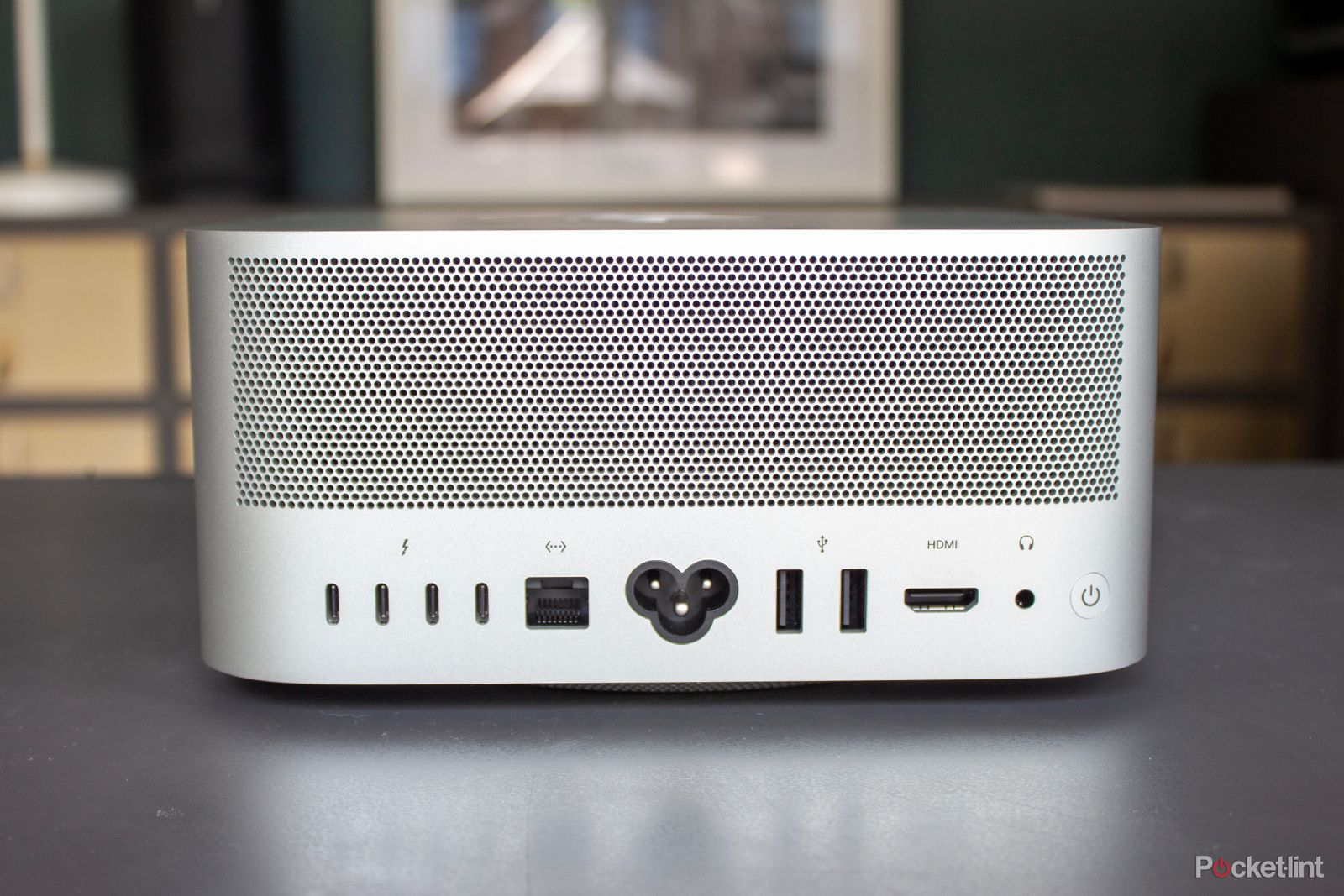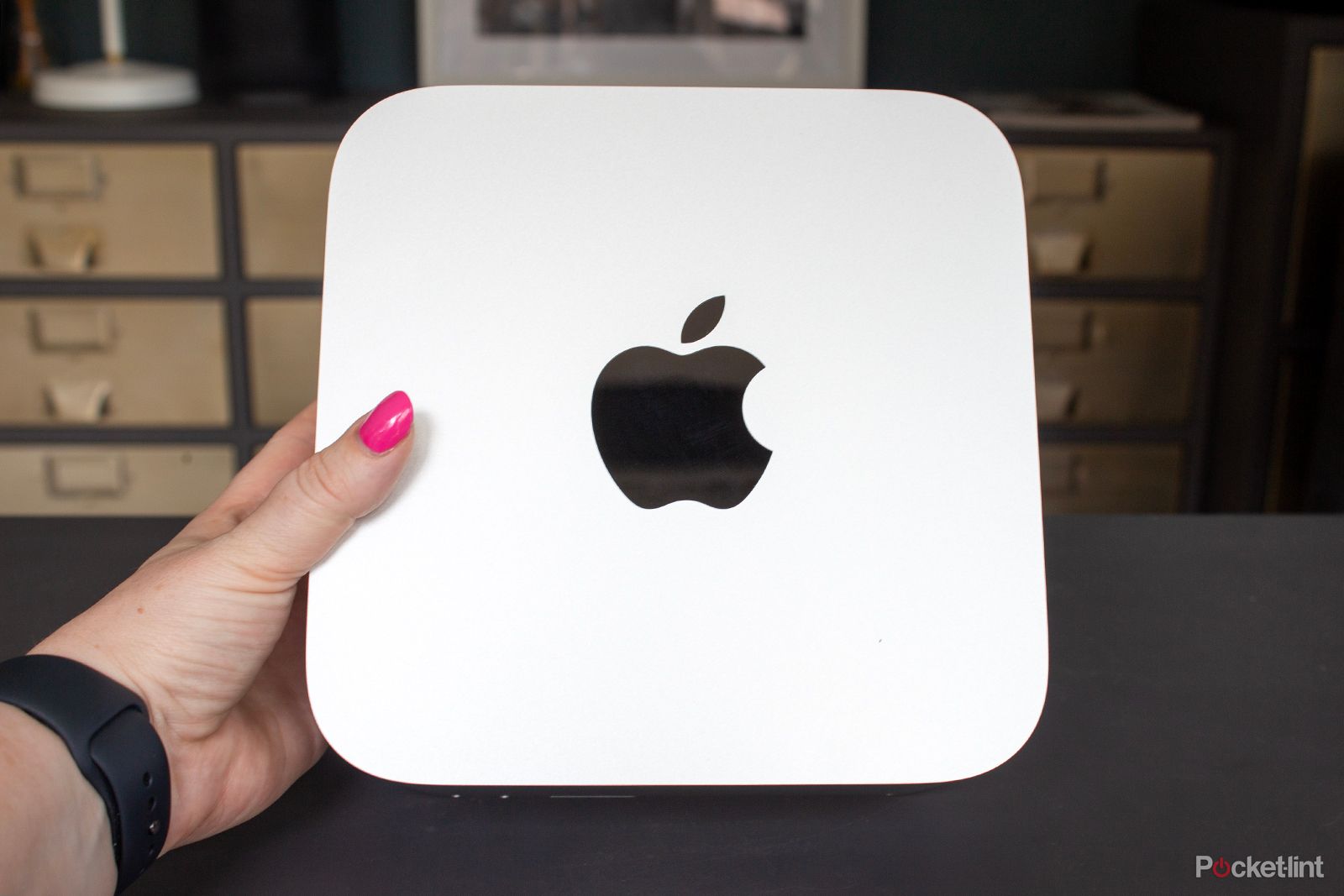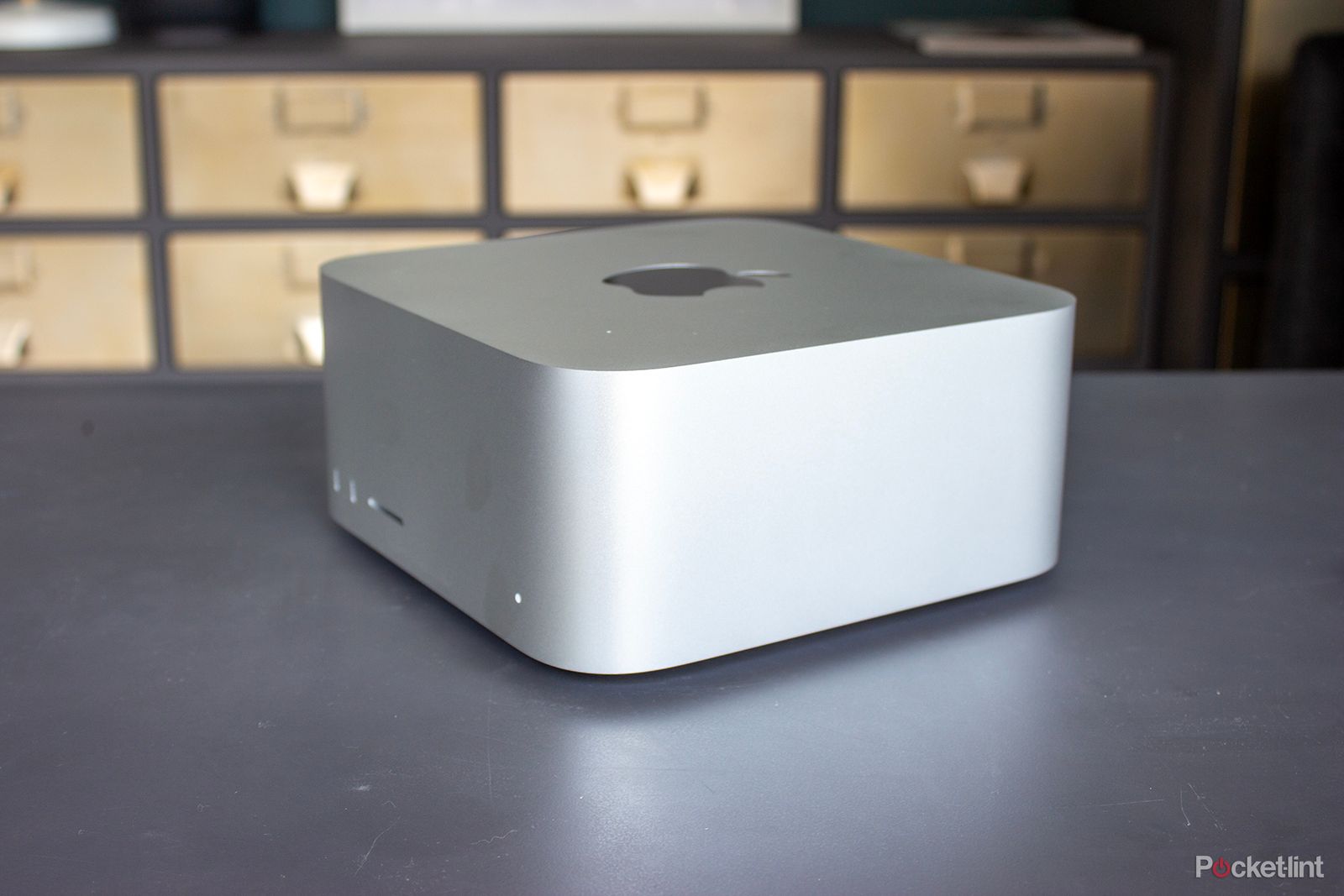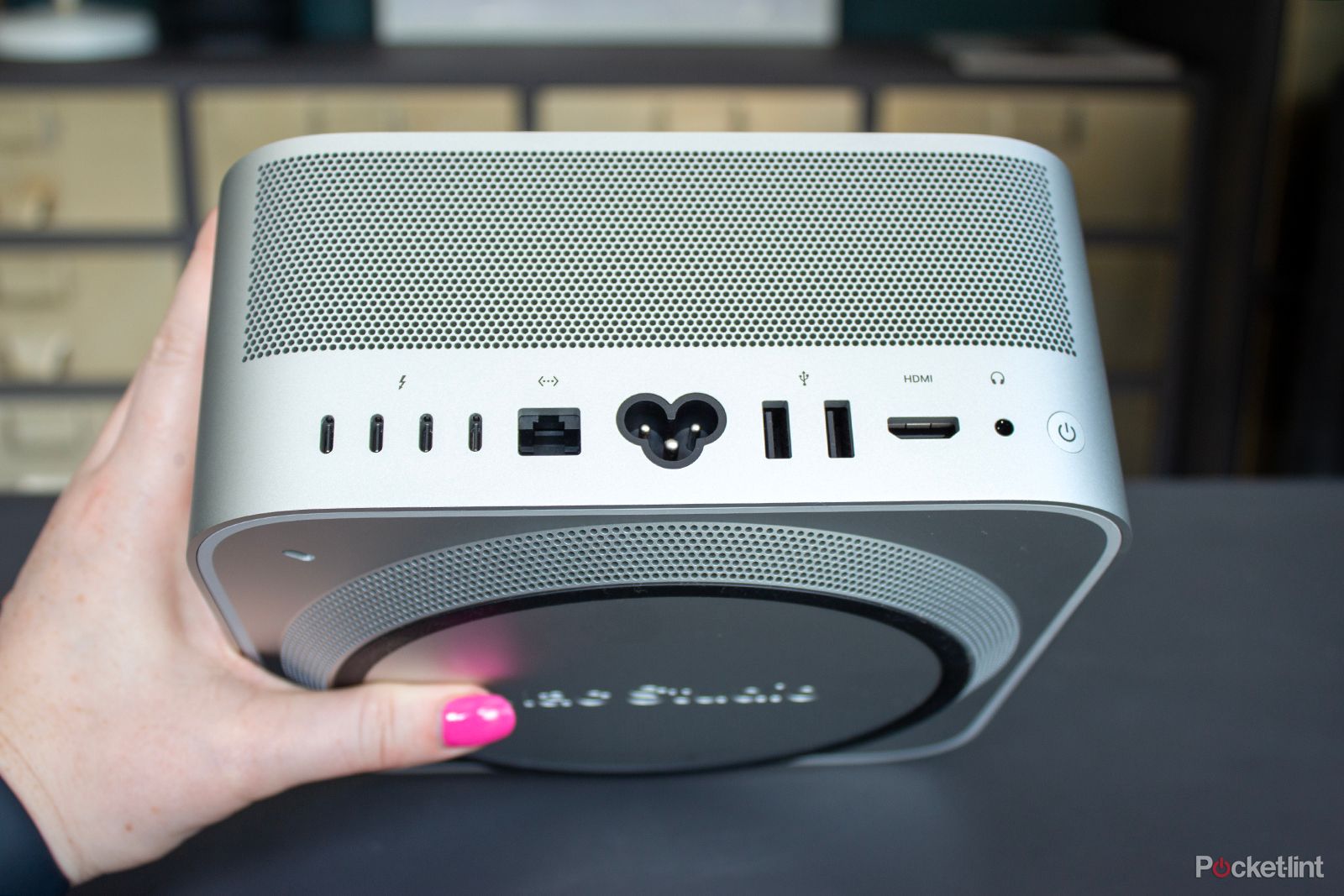There were several announcements at Apple’s Worldwide Developer Conference in June, and they didn’t just arrive in the form of software. In fact, software took a backseat this year, with new hardware releases stealing the show. I’ve experienced Apple’s take on a mixed reality headset in the Vision Pro (it’s great by the way), and I’ve also had my Pocket-lint paws on the new larger MacBook Air, which is excellent.
They weren’t the only hardware announcements at the event though, with a power upgrade for Mac Studio and a move to Apple Silicon for the Mac Pro also being announced. I’ve had the Apple Mac Studio setup proudly on the desk in my office, and it is fantastic, as well as more power than most people will ever need. Here’s my rundown of the power desktop.
Apple
Apple Mac Studio (2023)
Recommended
The Apple Mac Studio might not have changed much in design compared to last year’s model, but that’s not what it’s about. The design is already great, delivering mighty power in a neat and compact package.
- Neat and compact design
- Plenty of ports
- Huge amount of power
- Expensive
- Not upgradeable post purchase
- Keyboard and mouse not included
Neat design
- Rear ports: 4x USB-C /Thunderbolt 4, 1x 10Gb Ethernet, 2x USB-A, 1x HDMI, 1x 3.5mm headphone jack
- Front ports: 2x USB-C (M2 Max) / 2x Thunderbolt 4 (M2 Ultra), SDXC
- Dimensions: 95 x 197 x 197mm
- Weight: 2.7kg (M2 Max) / 3.6kg (M2 Ultra)
The best way I can describe the Apple Mac Studio is say it’s a Mac mini on steroids. The Studio first arrived in 2022, which was the first time since 2005 that Apple had announced a new Mac category so it was a pretty big deal at the time. Positioned between the Mac mini and the Mac Pro, the Mac Studio is a square-shaped aluminium box with all the power of Mac within it, but everything else sold separately.
That means that like the Mac mini, you buy a display, keyboard, trackpad or mouse all individually, unless of course you have them already. In our setup, we have the Studio Display, Magic Keyboard and Magic Trackpad, and they are a delight to use together.
The Mac Studio is around twice the height of the Mac mini and it sits on top of your desk, resulting in a neat and tidy offering, but more than that, easy access to all the ports. There’s no reaching around a big monitor here. There are rounded edges, flat sides, a flat top with a polished Apple logo and a tapered bottom with grille holes for the fan and it’s every bit as premium as you would expect.
Nothing has changed in terms of design compared to the Mac Studio (2022), but that’s definitely not a criticism. The design works, with an SDXC card slot and two Thunderbolt 4 or USB-C ports (model dependent) conveniently positioned on the front, alongside the status light to the right, while the rear houses the rest of the ports, of which there are several.
In the centre, below more grille holes, which make for a more interesting design than the Mac mini, there is the main power port. To the left of the power port, there’s a 10Gb Ethernet port and four USB-C (Thunderbolt 4) ports. Meanwhile, to the right of the power port are two USB-A ports, an HDMI port, a 3.5mm headphone jack and a small and simple power button that makes that lovely chime Mac users will be familiar with when you turn it on. Despite being on the back though, the ports are lovely and easy to get to as there’s plenty of slack on the cable and the Mac Studio is light enough to spin with ease. There’s also a speaker built into the Mac Studio – as you may have guessed when we mentioned the chime. What is slightly strange as depending on where you position the Mac Studio, the sound for everything, like notifications then doesn’t necessarily come from directly in front of you. For us, it comes from the side, which is odd at first, though you get used to it.
That’s pretty much all there is to say about the design, unless we go into the Studio Display, Magic Keyboard and Magic Trackpad, all of which look fantastic and make the Mac Studio a lovely – though very expensive – alternative to the discontinued 27-inch iMac.
I’m predominately focusing on the Mac Studio on its own in this review, though the Studio Display’s design is really rather lovely and it looks great alongside the Mac Studio thanks to the matching grille holes for fabulous design synergy. The black Magic Keyboard and Trackpad add something too, so if you’re after a full setup, this is a truly great one to have. The issue of course is it’s by no means a cheap one. The Mac Studio is more than worthy as its own package too however, and perfect for popping on your desktop.
M2 Max/Ultra Performance gains
- Two base options:
- Apple M2 Max (12-core CPU, 30 core GPU), configurable to 24-core CPU with 38-core GPU
- Apple M2 Ultra (24 core CPU, 60 core GPU), configurable up to 24-core CPU with 76-core GPU
- Unified memory:
- M2 Max: 32GB (configurable to 96GB)
- M2 Ultra: 64GB (configurable to 192GB)
- SSD: 512GB or 1/2/4/8TB options
The design may not have seen any changes, but what’s under the Mac Studio’s hood has and that’s what matters. There’s a choice of chips, moving from the M1 Max and M1 Ultra that debuted on this device in 2022, to the M2 Max and M2 Ultra. The M2 Ultra is essentially two M2 Max chips together if you want it in simple terms.
The M2 Max is the same chipset as you will find in the most recent MacBook Pro models and it is an exceptional performing chip. The base model has a 12-core CPU and 30-core GPU, though it is configurable to a 24-core CPU and 38-core GPU. There are unified memory options of 32GB and 64GB, while storage options range from 512GB SSD to 8TB. For reference, our Mac Studio review unit has a 12-core CPU, 38-core GPU, 96GB unified memory and 4TB SSD, which would cost $4199 in the US and £4299 in the UK.
The M2 Ultra meanwhile, is an entirely new chipset, with the base model offering a 24-core CPU with 16 high-performance cores and 8 efficiency cores, alongside a 60-core GPU, though it is configurable up to 76 graphics cores. By comparison, the M1 Ultra chip had a 20-core CPU and up to 64-core GPU. There are also unified memory options of 64GB, 128GB and 192GB, while storage options range from 1TB to 8TB so we’re talking about some serious power here. More than many of us would know what to do with half of, let alone the full whack. The top-end model of the Mac Studio with the M2 Ultra will set you back $8799 in the US or £8999 in the UK so it’s not a small purchase by any stretch of the imagination.
There’s exceptional experience here based on my testing. I don’t have the top-spec model, but even the middle of the line Mac Studio that I had in for review is more power than most would need. I most definitely couldn’t do it justice based on what I require for my job, but what I can say with full confidence is that everything I did throw at this computer was rapid in absolutely everything from image filter processing on Photoshop to video rendering in Final Cut Pro.
Exporting an 8-minute 4K video in high quality took just over 2 minutes on my review unit of the MacBook Studio and resulted in a 3GB file, while exporting the same video in ProRes quality took under 30 seconds and resulted in a 27GB file, showing just how quick Apple M-silicon chips are at dealing with ProRes. By comparison, the same exports on a Mac Mini with M1 chip and 16GB memory took just under 4 minutes for the 4K file and 2 minutes and 50 seconds for the ProRes file. On the MacBook Pro with M2 Max chip and 64GB unified memory it was 2 minutes 30 seconds for the 4K file and 34 seconds for the ProRes file. On the MacBook Air with M2 chip and 16GB memory, timings were over 8 minutes for the 4K file, and just under 1 minute 30 seconds for the ProRes file.
During my time at WWDC, I also saw the Mac Studio running the kind of programmes it would be expected to so I’ve included here to give more context of its capabilities. One model with the M2 Max chip like my review model handled six images at 150-megapixels each with ease. It took around 10 seconds for the Mac Studio I saw to auto-blend the layers in Photoshop and create an image that combined the best elements of all six images into one image that was sharp and had everything in focus.
I also saw a Mac Studio with M2 Ultra chip handle 3D images without breaking any kind of sweat at all, as well as multiple 4K Pro-Res videos. Apple says the media engines collaborate better together and that was clear in the demos. A 3D image was created in Maya – now native to Apple Silicon – in a few minutes, while the Mac Studio with an M2 Ultra chip simultaneously ran 12 videos, all 4K Pro-Res, allowing for a very quick and simple multi-angle edit. There was another instance where 700 channels of instruments were running alongside each other, allowing for individual controls of each channel, while an 8K video was also running in the background and there wasn’t even a murmur of struggle, so the raw power offered here is excellent.
From my experience, both the M2 Max and the M2 Ultra to perform as you would expect – and exceed expectations. The M2 Ultra sits high and mighty at the top of Apple’s chip portfolio and given the M2 chip continues to perform well over a year after its release, the M2 Ultra will no doubt handle really high resolution and high bitrate files without any drama whatsoever.
macOS software
The Mac Studio offers the full Mac software experience, which means it delivers everything you’d expect from a MacBook Pro in terms of features for example. The difference of course is that this isn’t an all-in-one desktop like the iMac. Instead it’s a way to a very powerful Mac and the Mac experience, but with the option of using a different external display, as well as a different keyboard and mouse or trackpad if you wish. It’s a Mac Mini but with heaps more power.
The Mac Studio runs on macOS Ventura, offering all the features that software brings with it, including Stage Manager and all the useful changes that come with Mail for example, but it will also be upgraded to macOS Somona when that arrives later this year and chances are, with the amount of power this machine has, it will perform the new features brilliantly.
For all the features offered by macOS Ventura, you can read the separate feature, but there is also a feature on macOS Somona and all the new features coming to Mac later this year that’s worth a read. I’ve also written a Mac tips and tricks feature worth checking out as the tricks apply across all Macs, from iMac, Mac Studio and Mac mini to MacBook Air and MacBook Pro.
Verdict
The Apple Mac Studio might not have changed much in design compared to last year’s model, but that’s not what it’s about. The design is already great, delivering mighty power in a neat and compact package.
While it might sound like a cliché, it’s what’s on the inside that counts and for the Mac Studio, that couldn’t be a truer statement. This is one super powerful device, with so much to give that the majority will likely not come anywhere near to testing it to its full potential.
With that power comes a huge price though as you move up the upgrades – and you can’t upgrade it post purchase either – so if you’re considering this device, you want to make sure you’re giving it all you have got to justify it. The Mac Studio is incredible though so if you’re in the market for a desktop powerhouse, there really is no need to look any further. It’s a hugely impressive offering here and one you won’t regret for a second.
Trending Products

Cooler Master MasterBox Q300L Micro-ATX Tower with Magnetic Design Dust Filter, Transparent Acrylic Side Panel, Adjustable I/O & Fully Ventilated Airflow, Black (MCB-Q300L-KANN-S00)

ASUS TUF Gaming GT301 ZAKU II Edition ATX mid-Tower Compact case with Tempered Glass Side Panel, Honeycomb Front Panel, 120mm Aura Addressable RGB Fan, Headphone Hanger,360mm Radiator, Gundam Edition

ASUS TUF Gaming GT501 Mid-Tower Computer Case for up to EATX Motherboards with USB 3.0 Front Panel Cases GT501/GRY/WITH Handle

be quiet! Pure Base 500DX ATX Mid Tower PC case | ARGB | 3 Pre-Installed Pure Wings 2 Fans | Tempered Glass Window | Black | BGW37

ASUS ROG Strix Helios GX601 White Edition RGB Mid-Tower Computer Case for ATX/EATX Motherboards with tempered glass, aluminum frame, GPU braces, 420mm radiator support and Aura Sync














